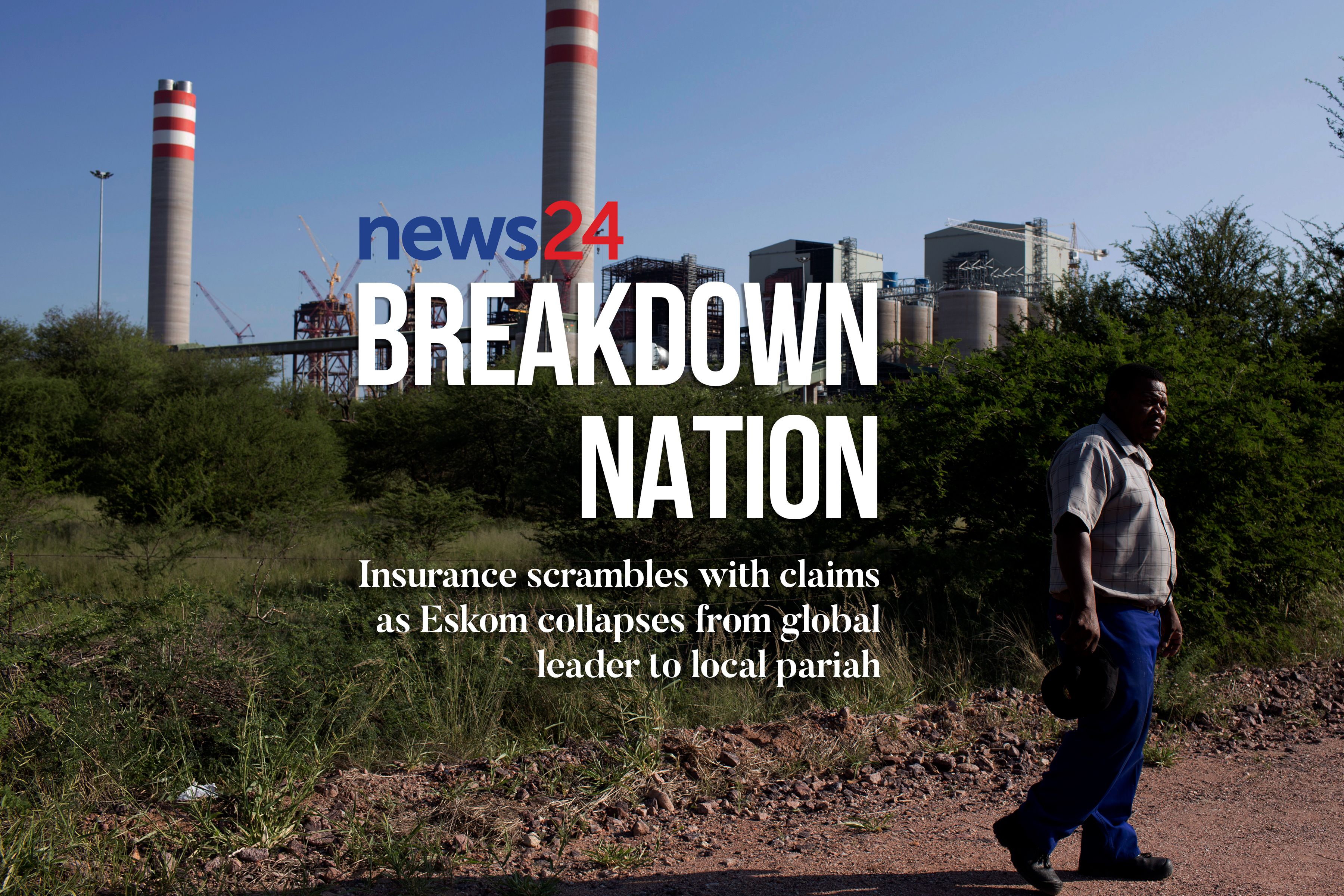
As South Africans come to grip with Eskom’s worst performance in recent memory, insurance companies reveal a dramatic increase in claims related to load shedding. Meanwhile, airlines are reporting thousands of missed flights as load-shedding impacts travellers. How did this happen, when Eskom was named the World's Best Power Utility in 2001?
Your support affords us the time and resources to produce rich, in-depth journalism that matters.

Load shedding insurance claims surge up to 60% as burglars take advantage of blackouts
By Londiwe Buthelezi
Santam recorded a 60% increase in claims for damage to sensitive electronics because of power surges caused by load shedding in the first half of 2022.
The period already marked SA's worst year on record for power cuts, while load shedding has since returned with a vengeance, once again escalating to Stage 6 this week.
The country's biggest short-term insurer said it saw power surge-related claims spike across its personal and commercial insurance portfolios, while the lights being out has also pushed up the number of burglaries and car accidents.


Decades of decline: How Eskom fell from best in the world to national disgrace in just 20 years
By Kyle Cowan
In the past 20 years, state-owned power utility Eskom has gone from being voted the best in the world in 2001 to a state of unreliability so pronounced that it is struggling on some days to meet even the lowest electricity demand of the country.
At a glitzy event in New York in December 2001, Eskom was named "Best Power Company" at the Financial Times' Global Energy Awards.
With Stage 6 load shedding implemented over the weekend and Stage 5 prevailing on Tuesday, the recent period of Eskom's worst performance in the democratic era has continued. The rotational blackouts, meant to save the national grid from collapse, are worse than ever before.


More load shedding chaos as travellers miss flights due to network outages, traffic jams
By Carin Smith
Load shedding has had another consequence for weary consumers as some travellers miss their flights because they cannot not receive urgent alerts about schedule changes, or when load shedding slows down traffic on the way to the airport.
"Load shedding may make it impossible for us to communicate with our customers, especially when we need to convey urgent schedule changes or other disruptions to travel. Another concern would be customers who travel to and from the airport.
"Traffic delays occur when load shedding kicks in and traffic lights are no longer operational, resulting in increased travel time," says Sue Garrett, general manager of supply, pricing and marketing at Flight Centre Travel Group South Africa.


'My health is in the hands of someone else' – Joburg resident amid ongoing power cuts
By Iavan Pijoos
Johannesburg residents were left in the dark as the City's technicians worked around the clock to restore power to damaged substations.
In Bosmont and surrounds, some residents have been without electricity since Sunday.
For Urshala Miller, 69, it was a double blow, with the already challenging schedules of load shedding.
Miller needs to be connected to her oxygen machine for at least 17 hours daily.

Why do we have load shedding? This simple breakdown will explain
Eskom remains hampered by a significant capacity shortage of between 4 000 and 6 000 megawatts. The need for new capacity is now more urgent than ever. So why do we have load shedding? In this explainer, News24 investigative journalist Kyle Cowan breaks it down in easy-to-understand terms.
Inside Eskom's week from hell – disaster as 50% of generation capacity fails
In the week between 3 and 11 September, 45 units at Eskom power stations failed, equaling roughly half of the power utility's generation capacity. Desperate work needed to be taken to fix 37 units, but load shedding was inevitable.


To our subscribers: Your subscription enables us to bring you essential, premium coverage and insight into our worsening energy crisis. Thank you.

Times are dark, but Ramaphosa's crisis team is lighting the way with power plan
By Carol Paton
The National Energy Crisis Committee (Necom), responsible for implementing President Cyril Ramaphosa's crisis plan announced two months ago, has made good progress on about a third of its programme, with just over two-thirds either works in progress or yet to begin.
The plan is centred on making it quicker and easier for private producers to generate their own energy. On 25 July, Ramaphosa said the plan would improve Eskom's performance, procure more new generation capacity, "massively" increase private investment in generation, and enable businesses and households to invest in rooftop solar.
Ramaphosa, who will return to SA by Tuesday after Eskom implemented Stage 6 load shedding for the third time and warned of the risk of unprecedented power cuts, will update the public in an address to the nation at a date to be announced, his spokesperson Vincent Magwenya said on Monday.


Black September: Inside the worst weeks in Eskom's recent history as breakdowns push SA to the edge
By Kyle Cowan
Eskom has already blown its R8 billion a year budget for diesel, in order to stave off the worst levels of load shedding. It has experienced roughly 99 breakdowns in just two weeks.
The problems across Eskom's 15-strong fleet of coal-fired power stations are manifold - and all, with the exception of newly-built Medupi and yet-to-be-completed Kusile, the result of decades of less than required levels of maintenance, after being run far harder than industry benchmarks, simply to keep the lights on while government dithered on procuring new capacity.


EXPLAINER | Beyond Stage 8, total blackouts and 'black start' tests
More unexpected trips cannot be ruled out, and it is not inconceivable that in case of catastrophic breakdowns, load shedding could reach Stage 8. This would turn off power for most South Africans for 48 hours out of every four days – the equivalent of 12 hours per day.
What happens after Stage 8?





